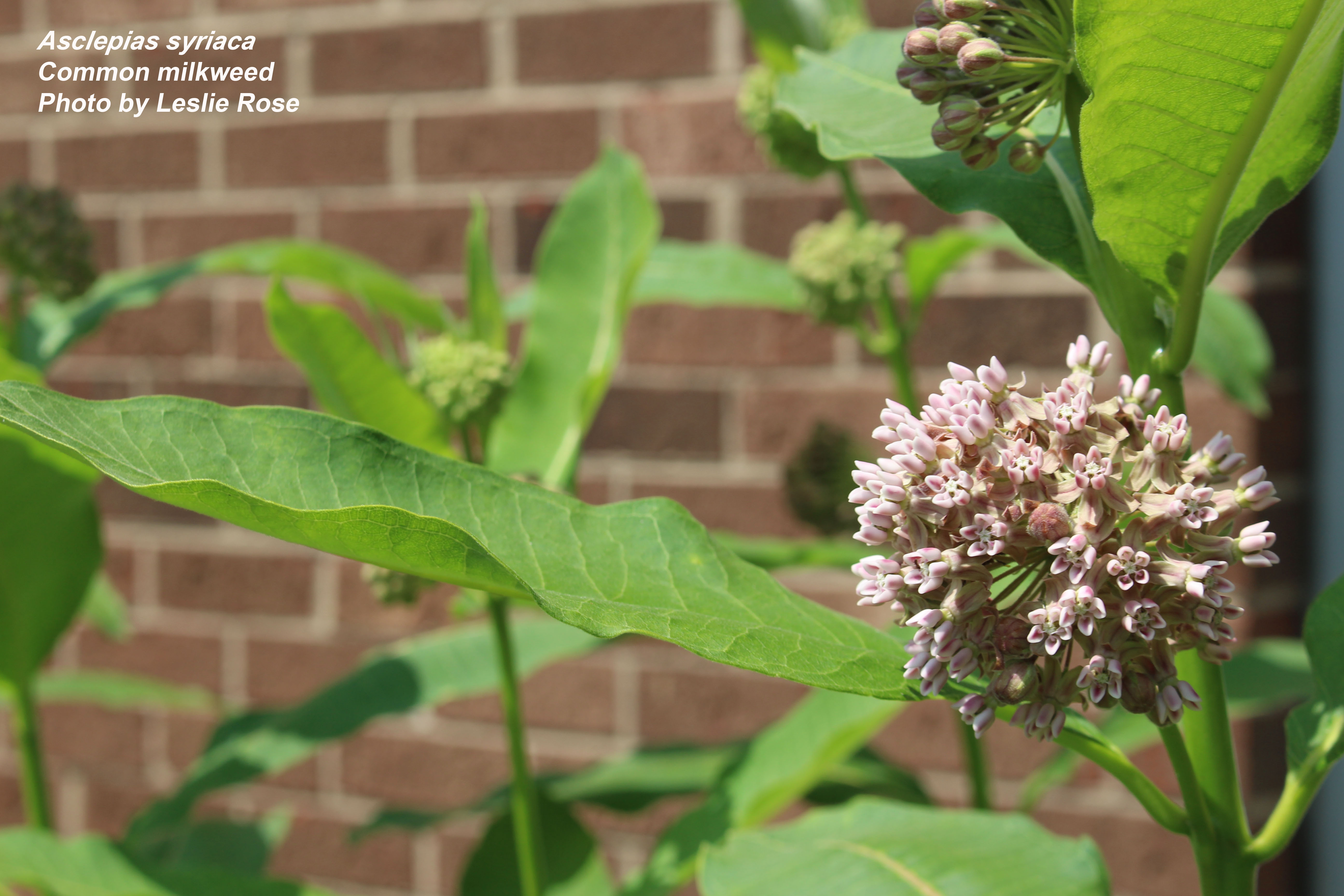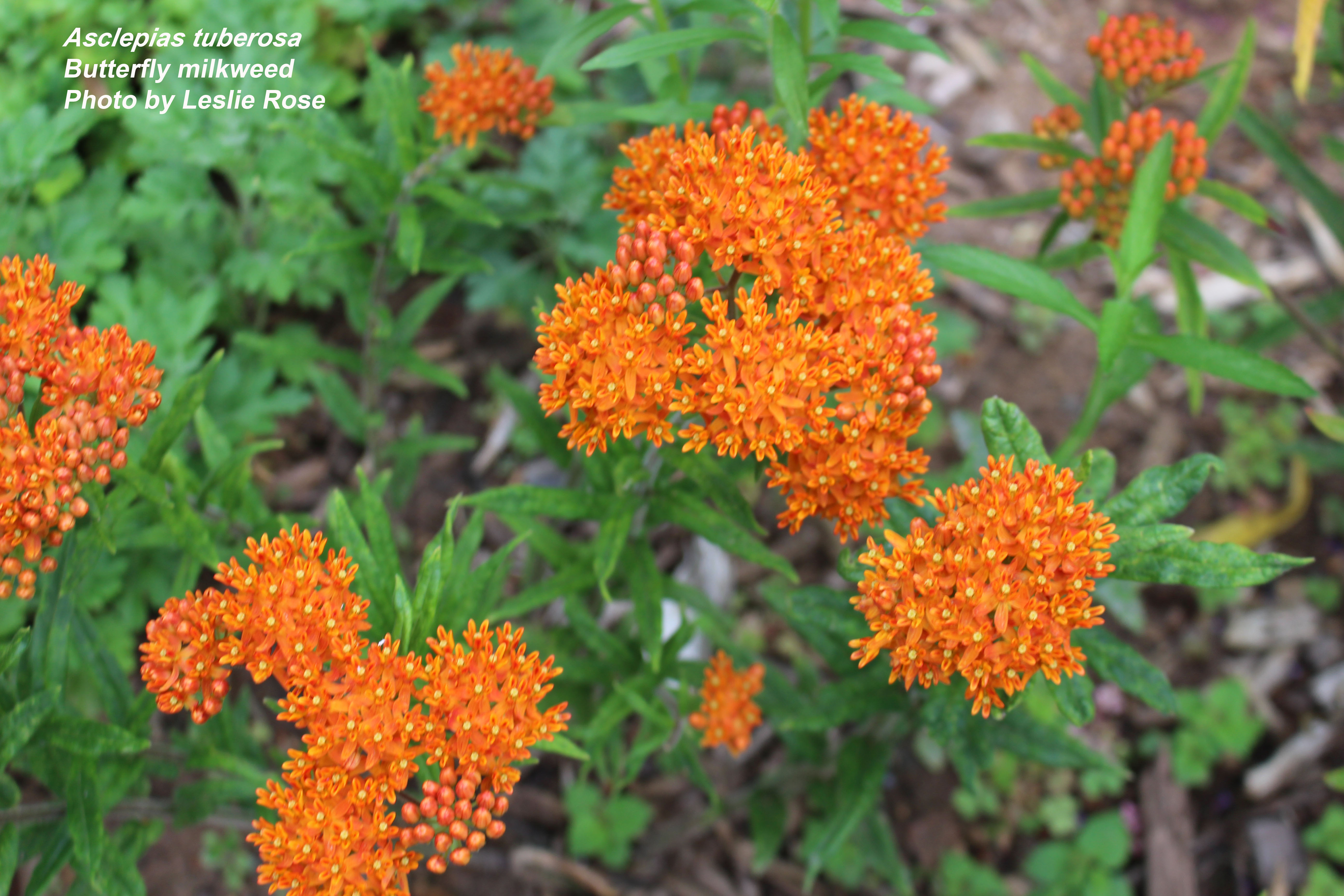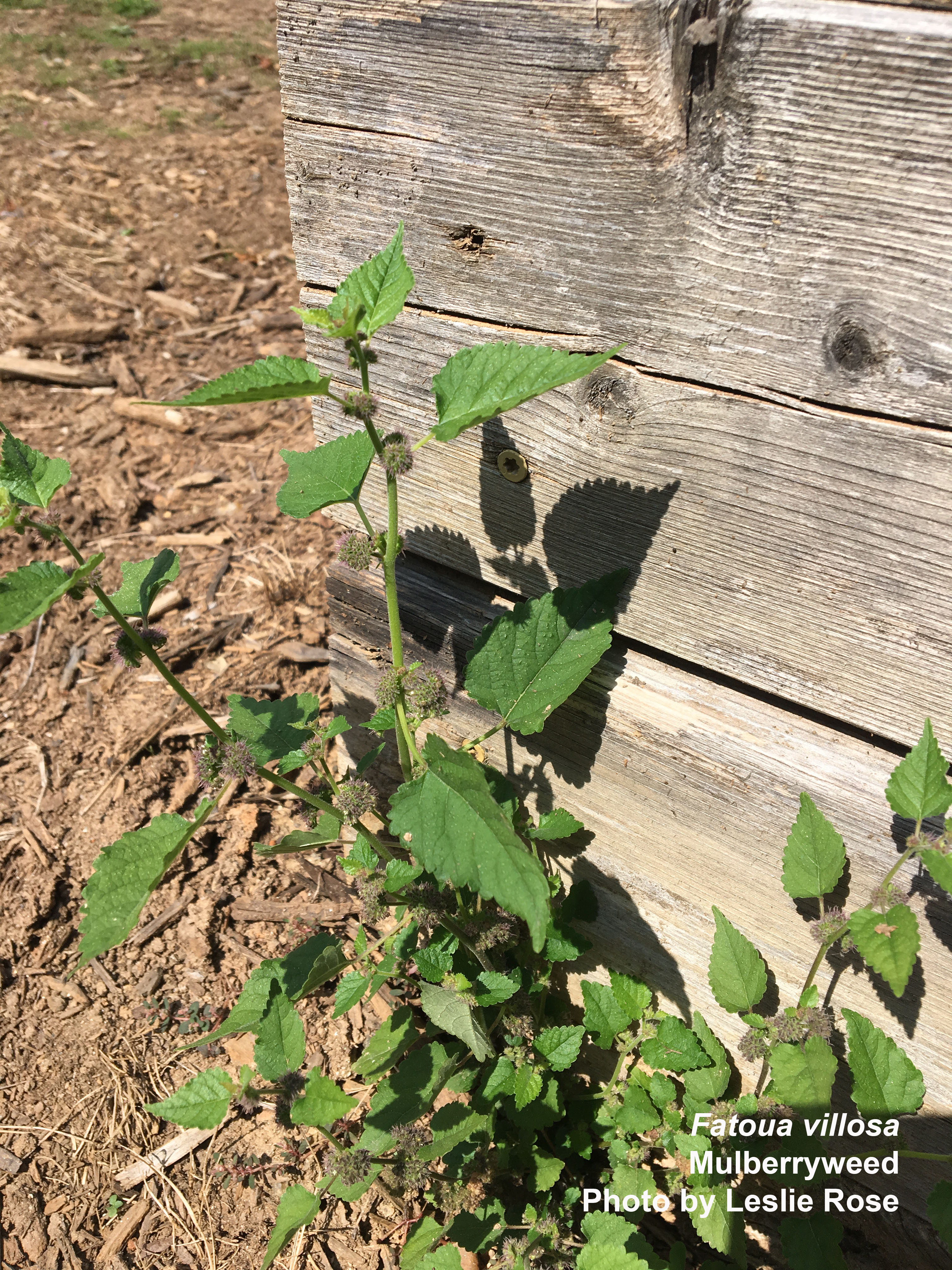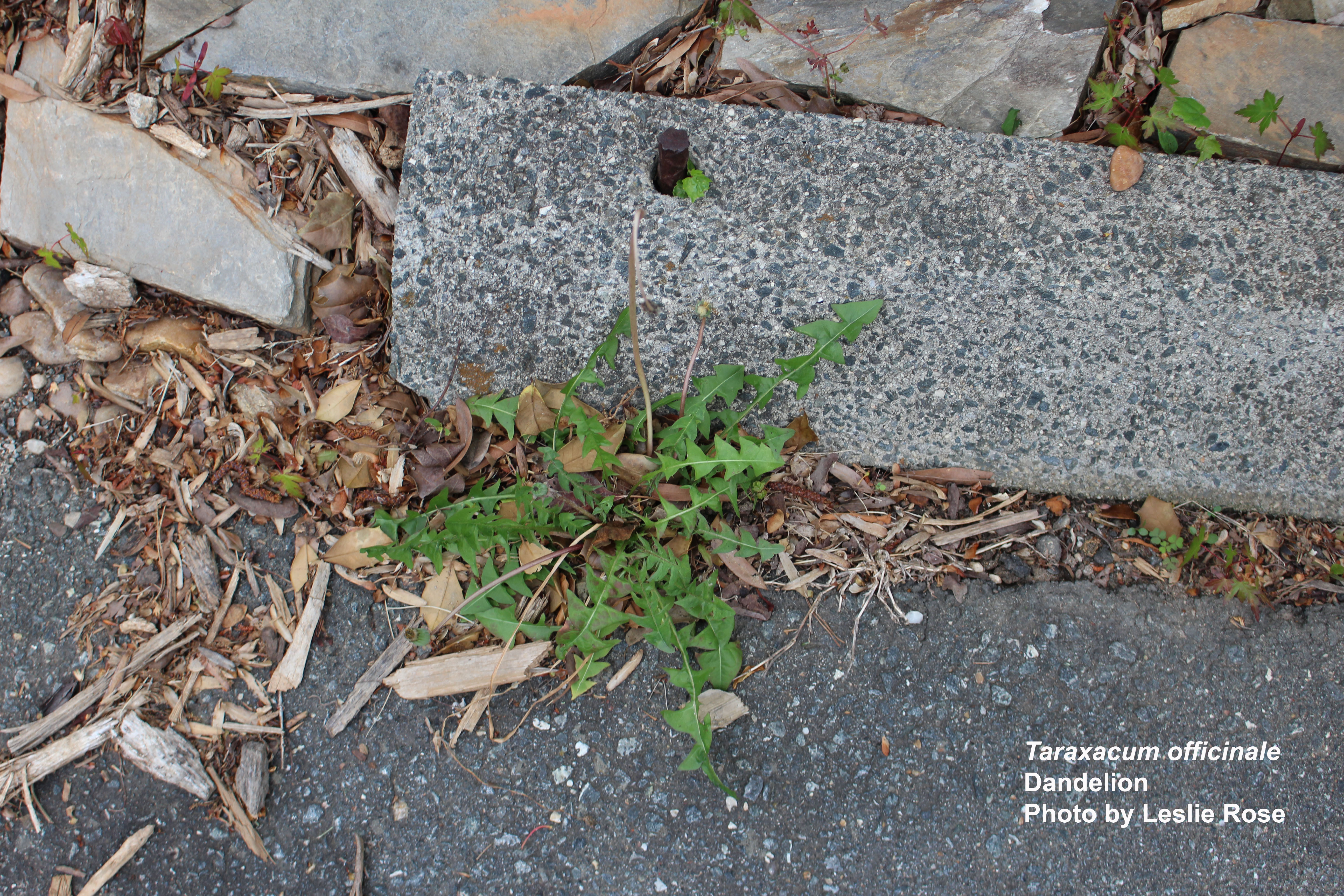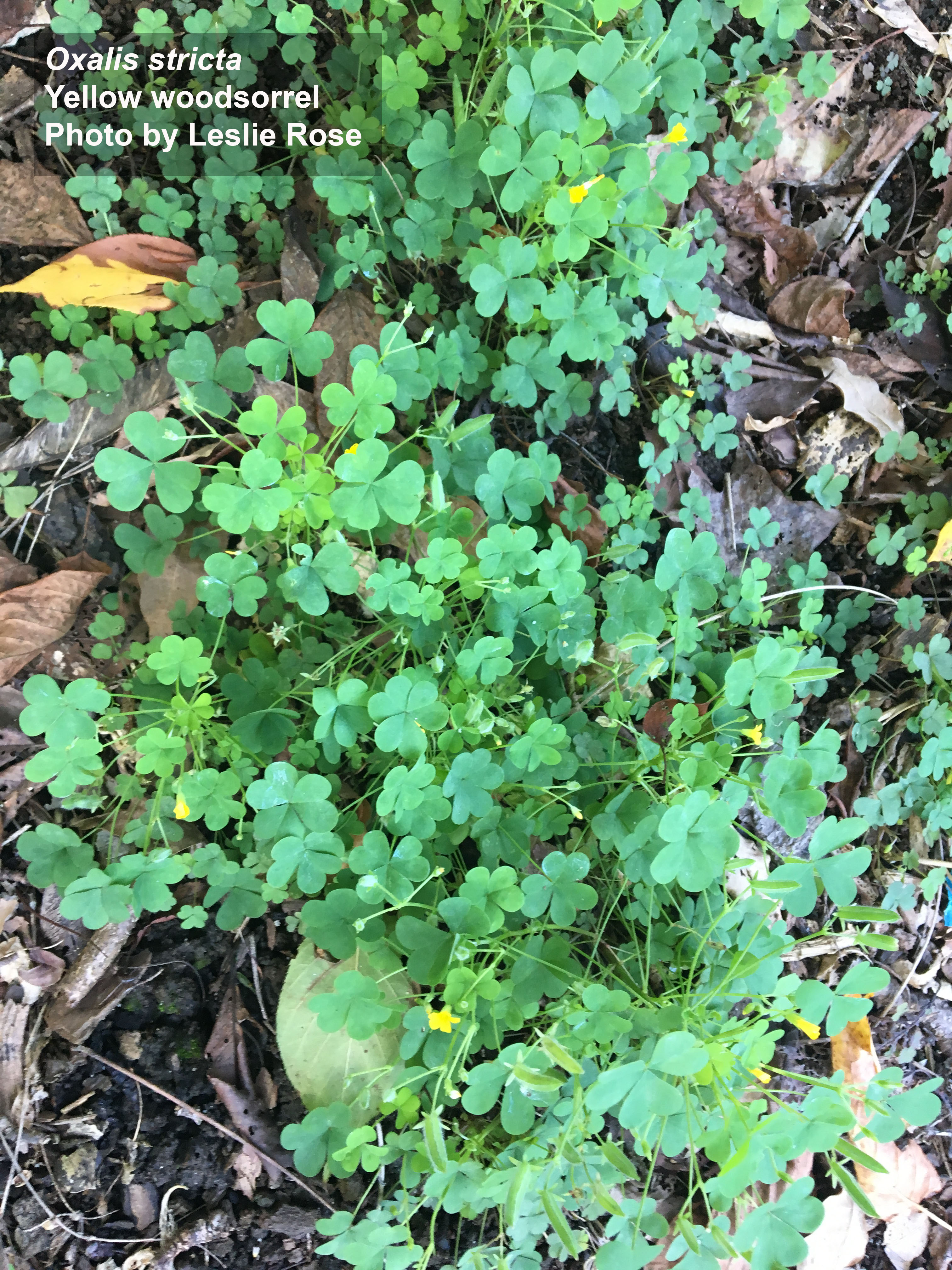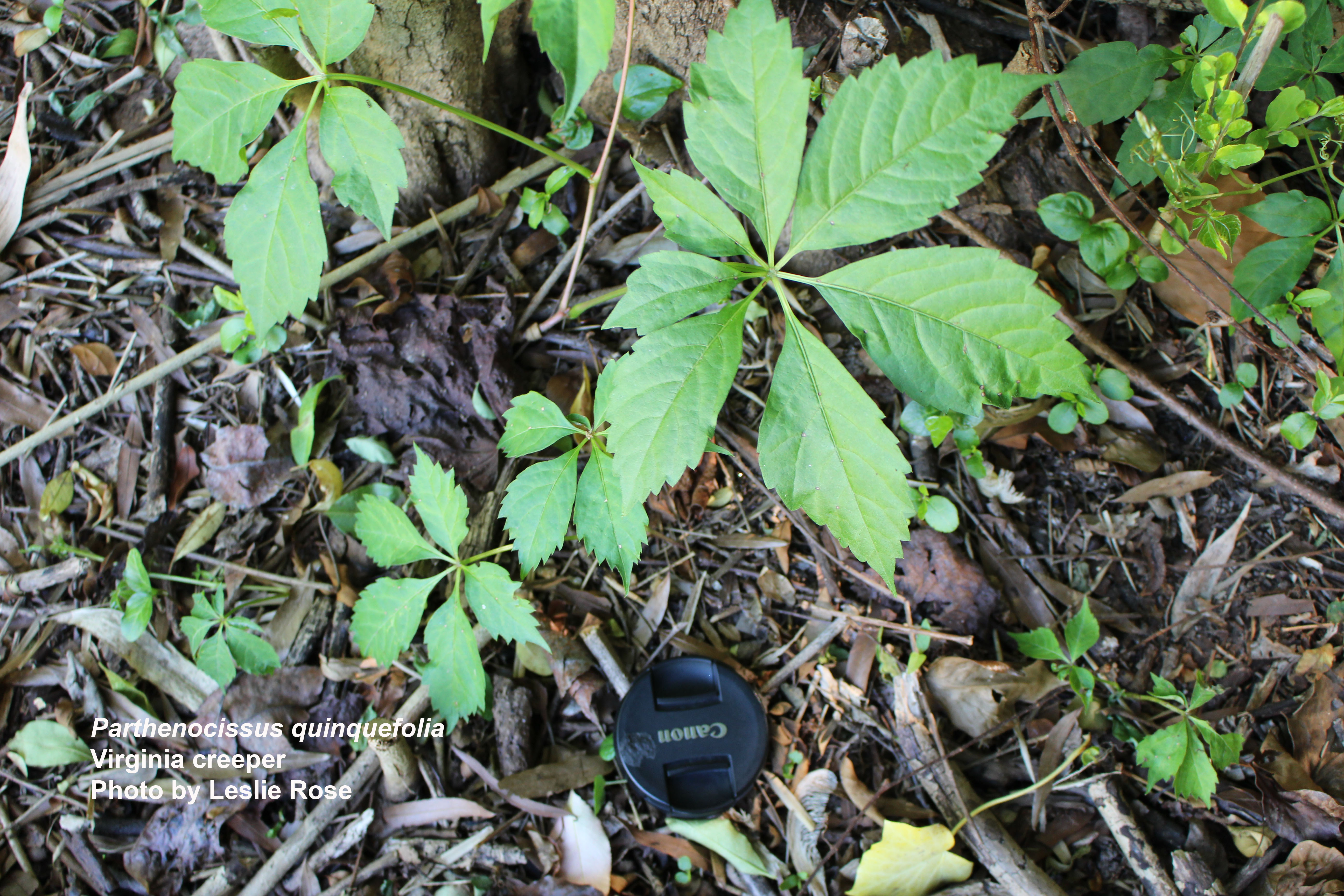What’s in Bloom?
go.ncsu.edu/readext?670518
en Español / em Português
El inglés es el idioma de control de esta página. En la medida en que haya algún conflicto entre la traducción al inglés y la traducción, el inglés prevalece.
Al hacer clic en el enlace de traducción se activa un servicio de traducción gratuito para convertir la página al español. Al igual que con cualquier traducción por Internet, la conversión no es sensible al contexto y puede que no traduzca el texto en su significado original. NC State Extension no garantiza la exactitud del texto traducido. Por favor, tenga en cuenta que algunas aplicaciones y/o servicios pueden no funcionar como se espera cuando se traducen.
Português
Inglês é o idioma de controle desta página. Na medida que haja algum conflito entre o texto original em Inglês e a tradução, o Inglês prevalece.
Ao clicar no link de tradução, um serviço gratuito de tradução será ativado para converter a página para o Português. Como em qualquer tradução pela internet, a conversão não é sensivel ao contexto e pode não ocorrer a tradução para o significado orginal. O serviço de Extensão da Carolina do Norte (NC State Extension) não garante a exatidão do texto traduzido. Por favor, observe que algumas funções ou serviços podem não funcionar como esperado após a tradução.
English
English is the controlling language of this page. To the extent there is any conflict between the English text and the translation, English controls.
Clicking on the translation link activates a free translation service to convert the page to Spanish. As with any Internet translation, the conversion is not context-sensitive and may not translate the text to its original meaning. NC State Extension does not guarantee the accuracy of the translated text. Please note that some applications and/or services may not function as expected when translated.
Collapse ▲What’s in bloom in Forsyth County?
N.C. Cooperative Extension mantains two public gardens in Forsyth County with the assistance of NC State Extension Master Gardener℠ volunteers of Forsyth County:
-
- The Forsyth County Demonstration Gardens are located at the Forsyth County Agriculture Building, 1450 Fairchild Rd, Winston-Salem, NC 27105.
- The Arboretum at Tanglewood Park is located within Tanglewood Park at 4201 Manor House Circle, Clemmons, NC 27012. You will find the Arboretum located behind the Manor House.
These gardens are open year-round for visitors.
If you want to learn more about one of the plants you see here, check out the NC Extension Gardener Plant Toolbox at plants.ces.ncsu.edu.
Visit our Gardening in the Piedmont website for basic gardening information, including recordings of past webinars and other great garden resources!
June 2025
There are a wide variety of plants blooming in our area during June, including perennials, trees, vines, and summer annuals. Follow along here for monthly updates on what is blooming in our Extension gardens. North Carolina Cooperative Extension, Forsyth County Center, manages two public gardens which are open to visitors.
Thank you to NC State Extension Master Gardener volunteers of Forsyth County, for assistance compiling photos and information.
Flowers
Milkweed plants are popular in pollinator gardens because they serve as host plants for the Monarch butterfly. Common milkweed (Asclepias syriaca) is a tall plant that will naturalize and spread in the garden; be aware of this trait if you have limited space. The clusters of flowers are present throughout the summer.
Butterfly milkweed (Asclepias tuberosa) is another host plant for Monarch butterflies. You will also see other pollinators visiting these flowers. This perennial is more well-behaved in a small garden space.
There are a wide variety of hydrangea species that bloom at different times of the year. Bigleaf hydrangea (Hydrangea macrophylla) blooms in the summer. A wide variety of cultivars are available. This shrub grows best with some shade. This hydrangea blooms on old wood, or the growth from the previous year, so avoid pruning it during the winter. Some cultivars will rebloom later in the season – these should be pruned just after their spring blooms have faded.
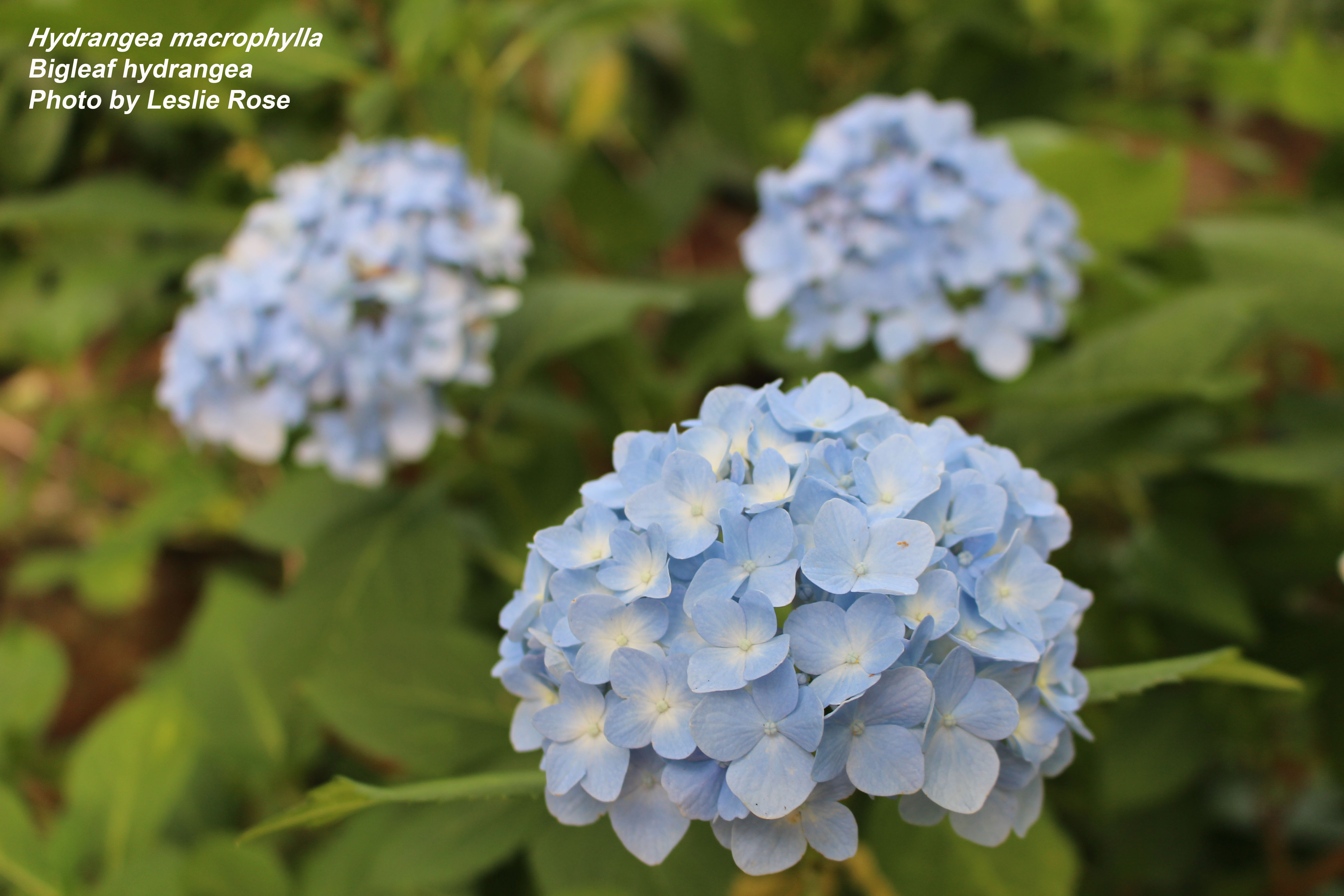
Bigleaf hydrangea is blooming during June. You can see this plant at the Demonstration Garden and at the Arboretum at Tanglewood Park.
Oakleaf hydrangea (Hydrangea quercifolia) is another hydrangea that blooms on old wood, so avoid pruning this plant in the winter. This hydrangea adds interest to the garden throughout the season as the blooms change color and the foliage develops fall color.
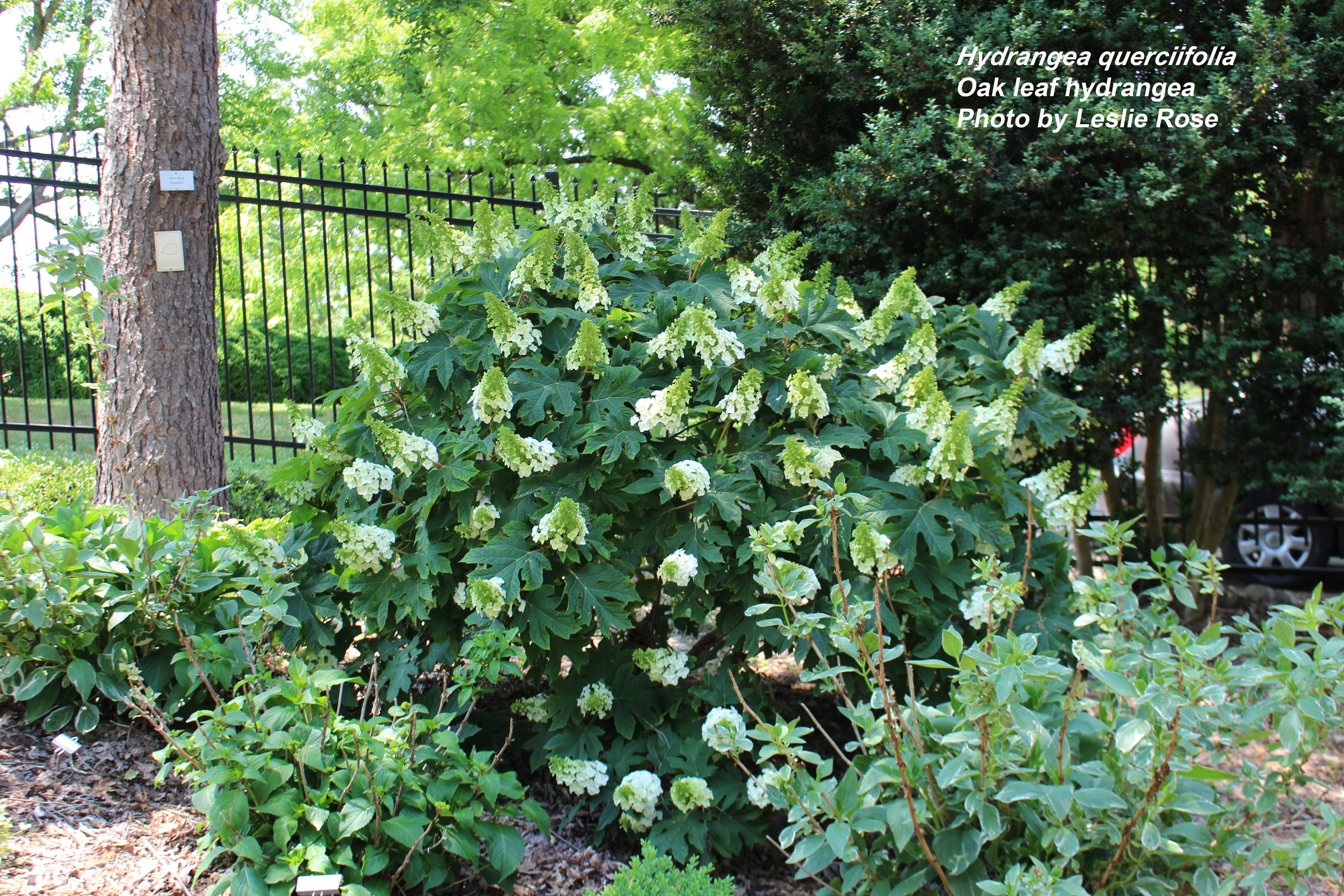
Oakleaf hydrangea is blooming in June. You can see this plant in growing at the Arboretum at Tanglewood Park.
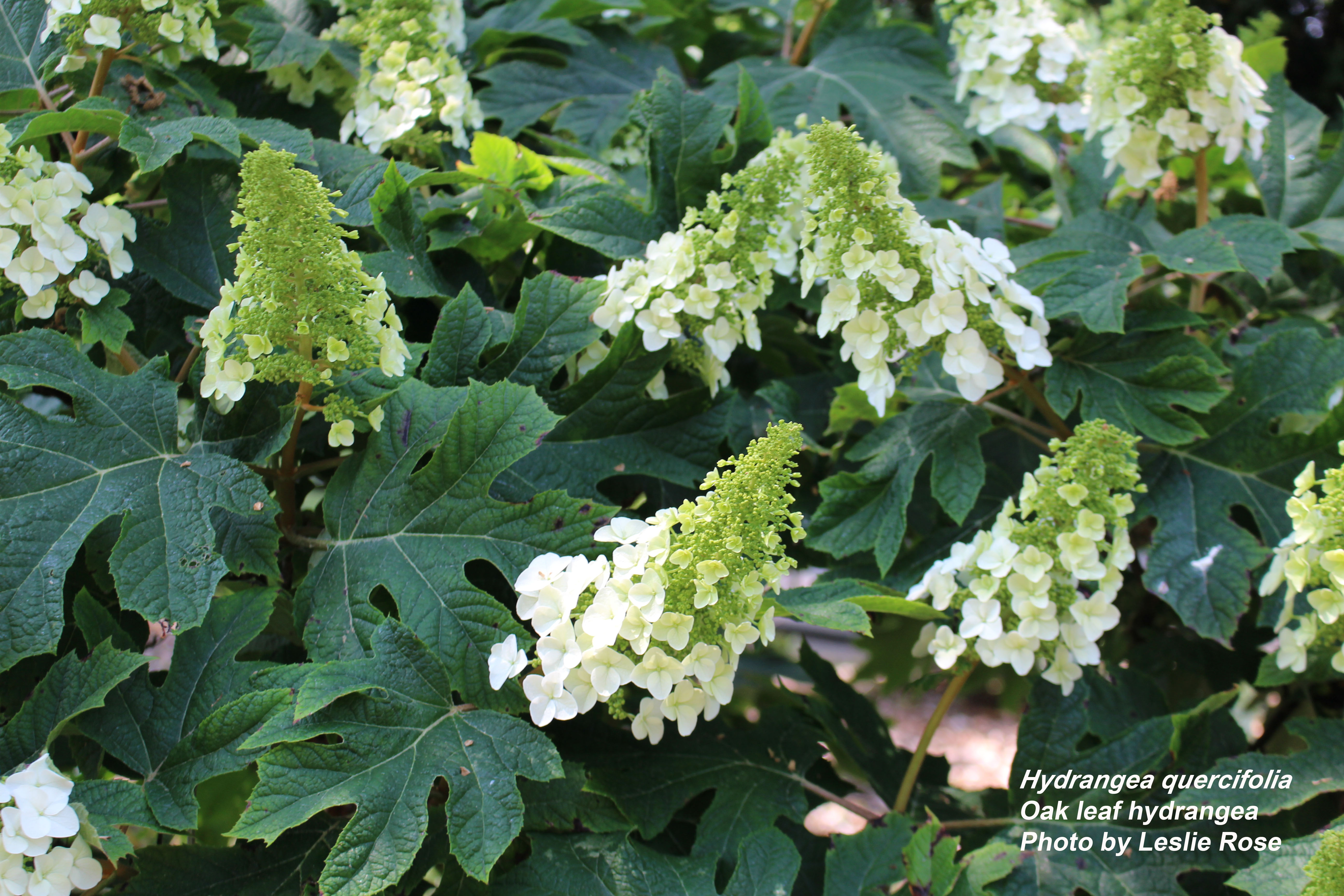
Oakleaf hydrangea is blooming in June. You can see this plant in growing at the Arboretum at Tanglewood Park.
A variety of Rudbeckia species, including Rudbeckia hirta, are commonly called Black-eyed Susan. These plants bloom during late spring and summer in our area. This perennial plant will grow and spread in the garden, and can easily be divided and shared with gardening friends. You can find this plant at both the Demonstration Garden and the Arboretum at Tanglewood Park.

Black-eyed Susan plants begin blooming in late spring and will typically continue blooming into the summer. You can see these in bloom at the Demonstration Garden or at the Arboretum at Tanglewood Park.
Bee balm, Monarda didyma, is a native, perennial plant that begins blooming in late spring. Varieties of this plant have pink, red, and purple flowers. The flowers attract a variety of pollinators. This plant will spread in the garden and flowers best in the full sun. Look for varieties with resistance to powdery mildew, as this is a common issue in the late summer garden. You can see bee balm growing at the Demonstration Garden and at the Arboretum at Tanglewood Park.

Bee balm flowers attract many pollinators during the summer. Varieties vary in their bloom color, including red, pink, and purple flowers. Look for varieties that are resistant to powdery mildew, as this is a common issue later in the season. Find these blooming at the Arboretum at Tanglewood Park or at the Demonstration Garden.
Weeds
Remember, a weeds is a plant growing out of place – what may be considered a weed by one person may be a welcome plant in another person’s garden.
In June, we see summer annual weeds growing in the garden along with perennial weeds. If you can start to recognize and remove weeds when they are small, this helps make maintenance more manageable over the gardening season.
Mulberryweed (Fatoua villosa) is an annual weed that resembles young mulberry trees. This weed spreads via prolific seed production. See this publication for management strategies for mulberryweed.
Euphorbia maculata (spotted spurge or prostrate spurch) is a summer annual, broadleaf weed. It that grows from a taproot with stems radiating from a central point. When broken, the red stems exude a milky sap. It forms prostrate mats near the ground which withstand mowing. Spurge can be difficult to remove in gravel, brick, or cement walkways because of its taproot. When removing spurge by hand, the taproot should be removed to prevent re-sprouting.
Pokeweed (Phytolacca americana) is a native plant that can frequently be found in fields and roadsides throughout the summer months. All parts of this plant are poisonous to humans. When allowed to mature, pokeweed develops white blooms followed by dark blue to purple berries. Because it is a perennial, gardeners should try to remove the roots when pulling this plant out of the garden.
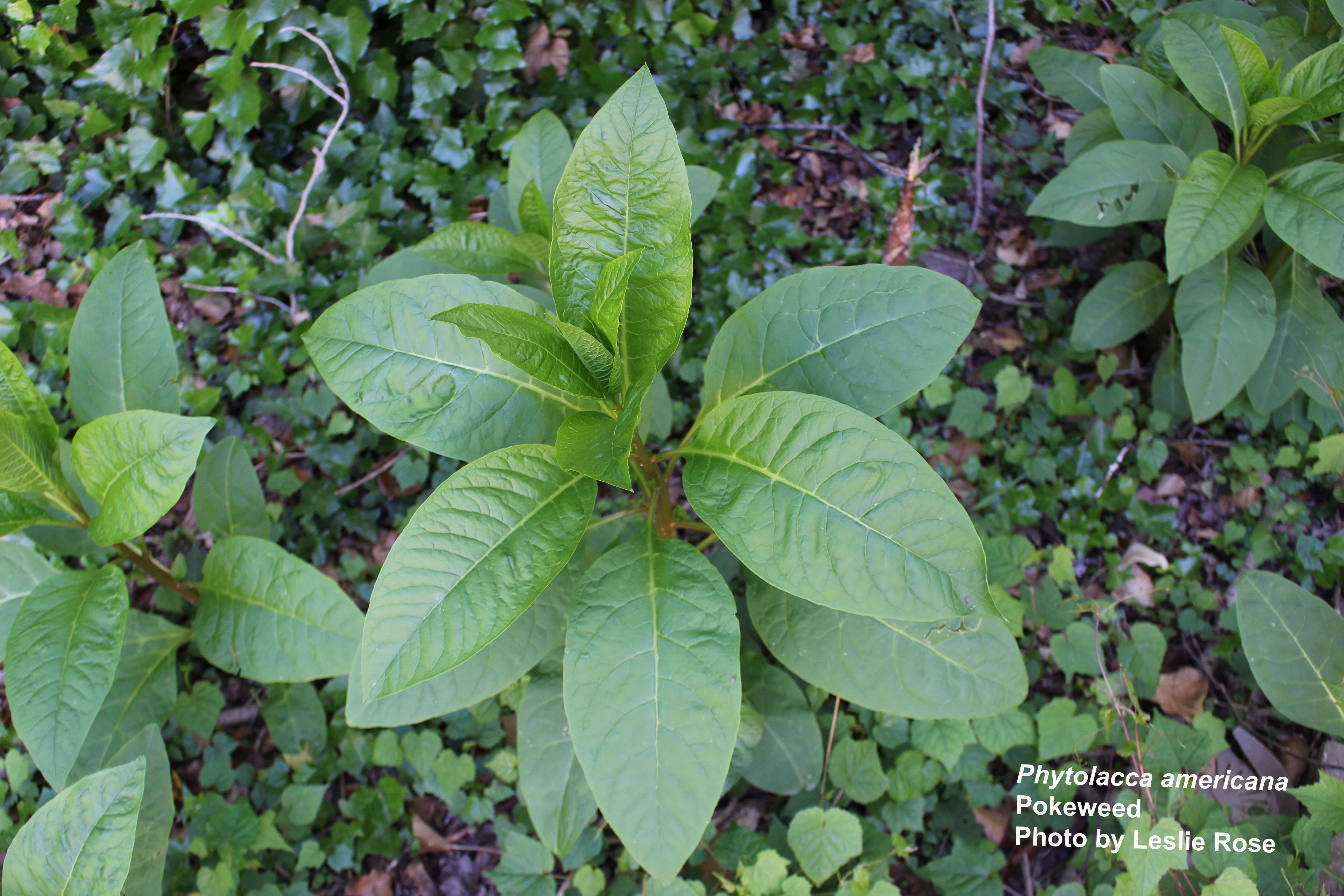
Pokeweed (the larger plant pictured here) is a native, perennial plant that is often considered a weed.
Dandelion (Taraxacum officinale) is a perennial weed. If you are removing this plant in the garden, try to dig down to remove its large tap root. Dandelions have toothed leaves and develop yellow flowers. Eventually, the flowers form white seeds that are easily dispersed by the wind.
Yellow woodsorrel (Oxalis stricta) is a perennial weed with small yellow flowers. After flowering, this plant develops cylindrical seed pods. When ready for dispersal, the seed pods will burst open to spread seeds widely through the garden. Try to remove these plants prior to flowering if possible.
Virginia creeper, Parthenocissus quinquefolia, is a native, vining plant that is often considered a weed. This perennial plant will rapidly vine through the garden and can cover trees, shrubs, fences, and other structures. The vine will get red fall color and is a host plant for the larval stage os several butterflies and moths.





